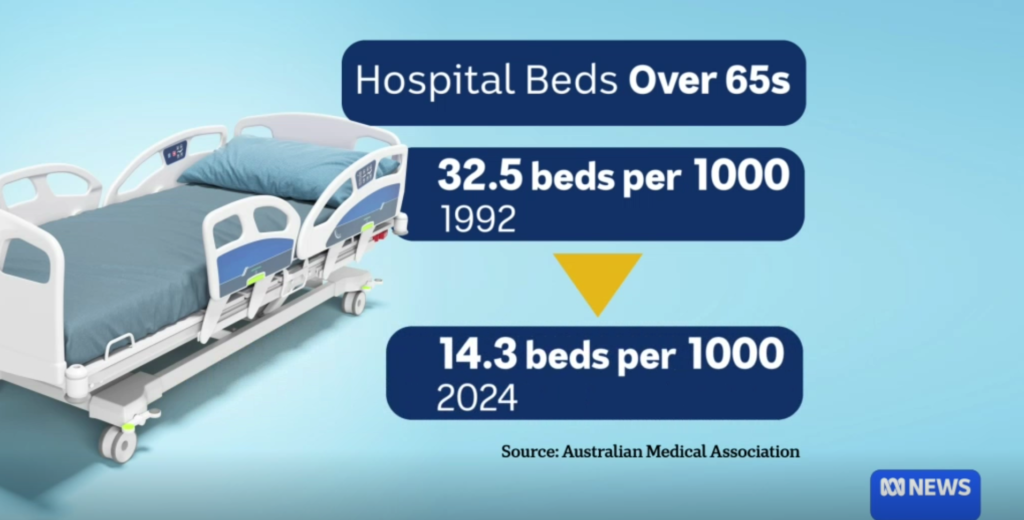
In recent years, the healthcare system has faced numerous challenges, particularly regarding elderly patients who often require specialized care. St. Vincent’s Hospital in Melbourne has taken a significant step to address these challenges by embedding a geriatrician directly in its emergency department (ED). This innovative program is not only altering the way elderly patients receive care but is also substantially reducing unnecessary hospital admissions, ultimately leading to better outcomes for this vulnerable population.
The Challenge of Elderly Care in Hospitals
Elderly patients account for a significant portion of emergency department visits. Many of these individuals face complex health issues, and hospitalization can pose more risks than benefits. Geriatrician Richard Kaine emphasizes this point, noting that being in a hospital can be more dangerous for older patients than remaining in their own homes. The hospital environment can contribute to various complications, such as hospital-acquired infections, loss of physical functionality, and cognitive decline due to unfamiliarity and stress.
The Program’s Impact
St. Vincent’s groundbreaking initiative focuses on reducing the number of elderly patients admitted to the hospital by providing comprehensive, in-home care options. For instance, Beverly Manog, an 85-year-old patient with osteoarthritis, experienced a sudden knee issue that led her to the emergency department. Under the new program, instead of facing a potentially lengthy hospital stay, she received a follow-up plan for home rehabilitation with daily visits from nurses and specialists.
Key Statistics
- Over 100 older patients diverted from hospital wards to home rehabilitation or aged care within one year.
- More than 900 acute bed days have been saved since the program began.
- Typically, three to four patient beds are available daily for other needs, improving overall hospital efficiency and patient care.
- 32.5 beds per 1000 in 1992
- 14.3 beds per 1000 in 2024
Such statistics demonstrate how successful the program has been in optimizing resources while ensuring that elderly patients receive the necessary care without the drawbacks of hospitalization.

Why Home Care Works
According to Kaine and other healthcare professionals, recovery tends to be faster for older patients in their familiar surroundings. Home environments can provide comfort and motivation, contributing to more successful health outcomes. This change allows healthcare providers to monitor their patients while alleviating pressures on hospital resources. Consequently, the program aims to ensure that patients receive appropriate care and support while preventing the overcrowding of hospital services.
Future Implications for the Healthcare System
As the population of elderly Australians grows, the pressure on healthcare services is expected to increase. The Peak Doctor’s Group warns that the number of hospital beds available per 1,000 citizens aged over 65 has declined dramatically over the past 30 years, marking a critical concern for future healthcare planning. To combat these challenges, they assert the importance of long-term government funding in the healthcare sector to cater to the needs of elderly patients effectively.
Advocacy for Funding
There is a growing consensus among healthcare advocates that any incoming federal government must prioritize developing a new, sustainable funding agreement for hospitals. The Labour Party has pledged to increase federal funding to this end, whereas the Coalition has expressed urgency in negotiating new agreements. These discussions are essential in shaping the future of elderly healthcare in Australia.
Conclusion
The innovative program at St. Vincent’s Hospital exemplifies a forward-thinking approach to managing elderly patient care. By embedding geriatricians in the emergency department, the hospital has successfully reduced unnecessary admissions while simultaneously enhancing patient recovery through at-home support.
The success of this initiative highlights the critical need for continued investment in healthcare resources and policies that prioritize the care of elderly Australians. As our population ages, embracing models like St. Vincent’s will be essential in ensuring our healthcare system remains efficient and responsive.
Encouragingly, this program serves as a model for other healthcare institutions facing similar challenges, demonstrating that with the right approaches, the future of elderly care can be not only more sustainable but also markedly better. Let’s engage in conversations and advocate for necessary policy changes to enhance the quality of healthcare for our aging population. Share this article to spread awareness about the importance of innovative solutions in elderly care!
Source: ABC News: Emergency department trial reduces number of elderly people taking up ward beds
Other useful links:
Australian Commission on Safety and Quality in Health Care



0 Comments